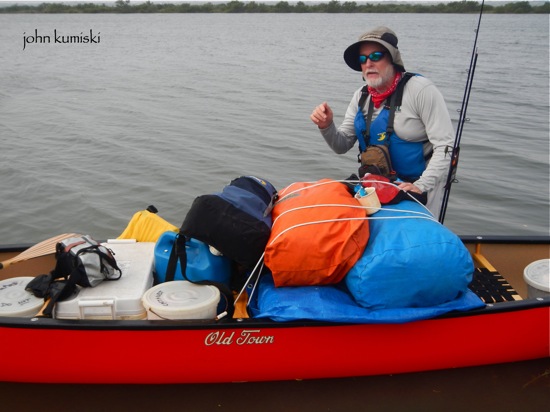Indian River Lagoon Paddle Adventure Epiblogue
The 2013 Indian River Lagoon Paddle Adventure is over. Before planning for the next one (!) starts, here are a few takaways that I see. I hope the other paddlers and support people will chime in with other constructive ideas.
-The paddlers and the folks who supported us were WONDERFUL. Caring, giving, concerned, funny, competent, well-educated- I could go on but my point is made. These folks are the best. My thanks to every one of them.
-Every paddler needs a navigational aid. At one point there were six of us out there paddling and I had the only chart. That was ridiculous. Every paddler needs a chart and compass or maybe one of those new-fangled GPS things with several spare batteries.
-Our collective voices are too fragmented. We spoke at the Marine Discovery Center, the Marine Resources Council, the Florida Oceanographic Institute, the Hobe Sound National Wildlife Refuge, and the Loxahatchee Environmental River Center in Jupiter. All these places do wonderful work, but they do not work together.
Big Sugar. Big Agriculture. Big Developers. Big Money. These forces are aligned with each other and their only goal is to make even more money, all other considerations be damned. If we can’t organize and match their political muscle the Lagoon is doomed.
Please sign the Clean Water Declaration now!
-There are not nearly enough campsites along the lagoon. When putting the preliminary float plan together I naively assumed we could camp on spoil islands the entire length of the lagoon. This turned out not to be the case. Rodney suggested a system of chickees similar to those in Everglades National Park. I don’t know how something like this can be done, but it needs to be done.
Many thanks to River Palms Cottages, Caribbean Shores, Jim and Kim Moir, and Jupiter Pointe Marina for filling in those gaps in our camping plan.
-There are too many lawns, seawalls, drainage ditches, and storm drains along the Lagoon. These things would be bad enough on a river that flushes itself. On this enclosed lagoon with little flow all the chemicals that wash into the Lagoon stay there. Retention ponds and strict fertilizer ordinances are badly needed.
-Lost seagrass acreage is the major ecological concern. With no grass between Port St. John and Vero Beach we have a long, barren stretch of Lagoon bottom. Seagrasses are the primary food producers in the Lagoons and their absence profoundly affects all the other organisms.
On the bright side, where they haven’t been cleared out the mangroves are doing beautifully. They seem to like the nutrient-enriched waters.
-Restoration of the filter feeders is needed desperately. Clams, oysters, and sponges filter Lagoon waters, as do finfish such as menhaden. All of these organisms need to be restored if the Lagoon is to function in any type of normal way.
-Cleanwaste’s Go Anywhere Portable Toilet (the “poop-a-seat”) received rave reviews from everyone on the trip and was perhaps the single best piece of equipment we carried other than boats and paddles. It was clean and convenient and kept our bodily wastes out of the local environment. Kudos to Cleanwaste for making such a great product, and thanks to Cleanwaste for donating it to the Paddle Adventure.
-The Old Town Penobscot is a heck of a boat, carrying Rodney and I and our too much stuff easily and swiftly.
-Bending Branches makes the best paddles I’ve ever used.
That’s all I have at this point. Let’s hear from some of the other participants of the Indian River Lagoon Paddle Adventure, please!
Life is great and I love my work!
Life is short. Go Padding!
John Kumiski
http://www.spottedtail.com
All content in this blog, including writing and photos, copyright John Kumiski 2013. All rights are reserved.
Related articles



Speak Your Mind